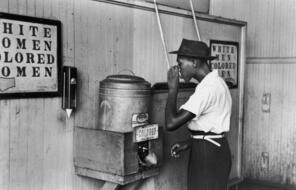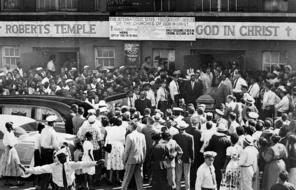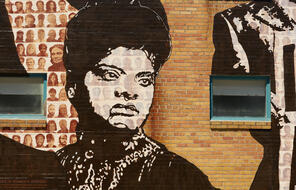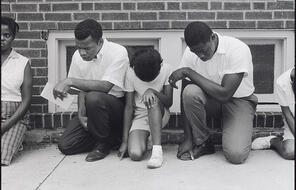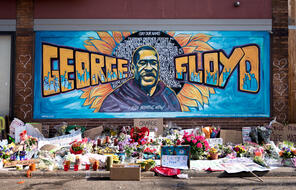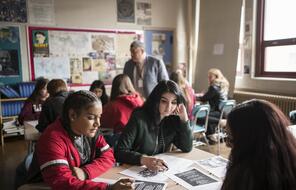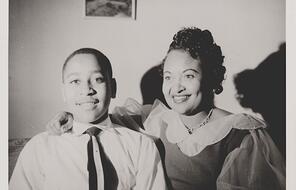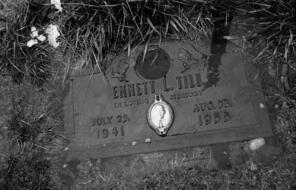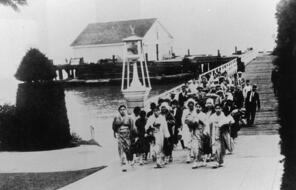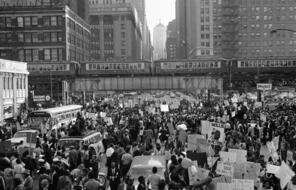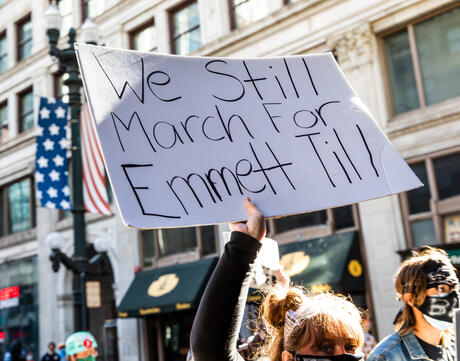
“I Wanted the Whole World to See”: The Murder of Emmett Till
Resources
7Duration
Multiple weeksSubject
- History
- Social Studies
Grade
9–12Language
English — USPublished
Get it in Google Drive!
Get everything you need including content from this page
Get it in Google Drive!
Get everything you need including content from this page
Overview
About This Unit
In this six-lesson unit, students will explore the history and legacy of the murder of Emmett Till. In particular, they will consider how Till’s murder and the courageous choices of his mother, Mamie Till-Mobley, inspired a generation of activists to work towards racial justice. Students will then reflect on the lessons this history holds as we work to achieve racial justice and how it might inform their civic choices.
This unit supports Facing History's US History Curriculum Collection: Democracy & Freedom. The flexible units, C3-style inquiries, and case studies in this collection help you explore themes of democracy and freedom throughout your US history course.
Preparing to Teach
A Note to Teachers
Before teaching this unit, please review the following information to help guide your preparation process.
Lesson Plans
Materials and Downloads
Quick Downloads
Download the Files
Download all“I Wanted the Whole World to See”: The Murder of Emmett Till
Angel Island Immigration Station: Exploring Borders and Belonging in US History
Democracy and Freedom: US History Capstone Project
Special Thanks
The Emmett Till & Mamie Till-Mobley Institute and Facing History & Ourselves would like to offer a special thank you to the partners, collaborators, and student advisors who made critical contributions to this curricular unit. They include colleagues from within the Till Institute as well as the Emmett Till Interpretive Center, the Alluvial Collective and students from across Mississippi.
Kobie Austin
Christopher Benson
Kenyatta Coleman
Kinsey Crowley
Abby Jo Flowers
Vondaris Gordon
Germaine Hampton
Zykira Hooper
Jataylon Johnson
Madison Jones
Qadre Latiker
Ashura Lewis
Elliot Long
Zakarriya Love
Katilyn Mackey
Kaliyah Mayes
Dr. Marvel Parker
Colin Richardson
Matthew Richey
Jay Rushing
Hannah Shapiro
Mike Small
Bethany Stanford
Ian Underwood
Dr. Earl Watkins
Jamari Williams
Adrianequa Wilchie
Myiesha Wright
Unlimited Access to Learning. More Added Every Month.
Facing History & Ourselves is designed for educators who want to help students explore identity, think critically, grow emotionally, act ethically, and participate in civic life. It’s hard work, so we’ve developed some go-to professional learning opportunities to help you along the way.
Exploring ELA Text Selection with Julia Torres
On-Demand

Working for Justice, Equity and Civic Agency in Our Schools: A Conversation with Clint Smith
On-Demand

Centering Student Voices to Build Community and Agency
On-Demand



